Clapham Wood in West Sussex has reported UFOs, big cats, vanishing people and other strange events. PETER A. McCUE looks at whether it deserves its title as one of England’s paranormal hotspots.
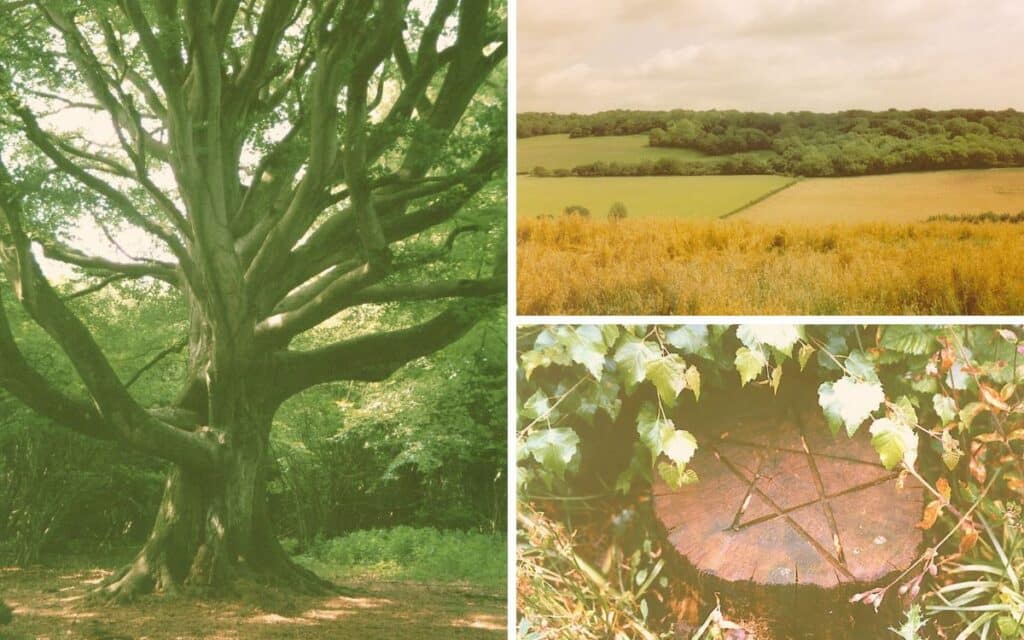
This article is based on Chapter 6 of my 2012 book Zones of Strangeness: An Examination of Paranormal and UFO Hot Spots. The three photographs shown below were taken by me in 2004.
A part of West Sussex has allegedly been the setting for strange events. I’m referring to an area on the South Downs that includes Clapham Wood (near the coastal town of Worthing), Chanctonbury Ring (the site of an ancient hill fort, about four miles north-east of Clapham Wood) and Cissbury Ring (the site of another hill fort, about two miles east-north-east of Clapham Wood). However, in what follows, I’ll focus mainly on Clapham Wood itself.
The case is the focus of a book titled The Demonic Connection: An Investigation into Satanism in England and the International Black Magic Conspiracy. It was first published, as a hardback, in 1987. Toyne Newton is the author named on its cover, but the title page refers to “Toyne Newton with Charles Walker & Alan Brown”. All three names appear on both the cover and the title page of a paperback edition of the book, published in 1993, giving the impression that Walker and Brown were co-authors.
However, the text, which hasn’t been updated, clearly implies that Newton was the sole author. He presumably included Walker and Brown’s names to acknowledge that they’d contributed to his research. The pagination of the hardback and paperback versions is the same, but the latter contains fewer photos.
Clapham Wood has received a fair amount of internet and media exposure. For example, it was the focus of a short article by Nick Brownlow in the September 2005 edition of the magazine Fortean Times. A more detailed and critical analysis of the case is provided by the folklorist Jacqueline Simpson in a journal article published in 1994 (‘Hecate in the primrose wood: the propagation of a rumour’, Contemporary Legend, 4, pp. 91-118), which I’ll refer to below.
The area around Clapham Wood
The village of Clapham lies to the north-west of Worthing and is about five miles east of Arundel. The church of St Mary the Virgin stands a little to the north of the village, close to the woods. From where the words ‘Clapham Wood’ appear on the Ordnance Survey’s 1:25,000 map of the Arundel and Pulborough area (Explorer 121), it might be thought that only the woodland north and east of the village bears that title. However, I gather that the wooded area to the south of the village, but north of the A27, is also regarded as being part of Clapham Wood.
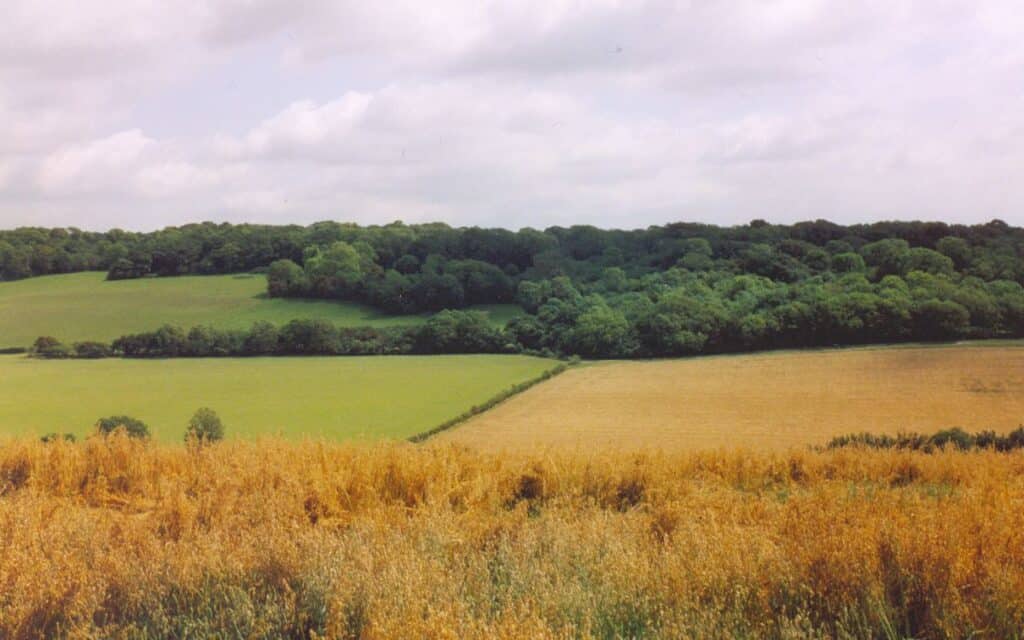
My copy of the OS map is dated 2003. But it doesn’t portray very accurately the layout of the woodland as I found it in 2004. It shows a clearing midway between Clapham village and Longfurlong Barn to the north. But the actual clearing extends a good deal further east than the map would give one to believe. And this additional area of clearing extends further north than the clearing shown on the map.
The OS map shows a crossing of two paths in the southern part of the wood, just below and to the left of where the words ‘Clapham Common’ appear. Another way of describing this would be to say that four paths meet at the junction. In fact, though, five paths converge on a small clearing there. At least, that was the case when I last visited Clapham Wood, in July 2004. The Demonic Connection refers to this part of the wood as ‘The Chestnuts’.
An Internet article by Charles Walker, entitled ‘Black magic in Clapham and Sussex’ (henceforth referred to as his BMCS article), also mentions The Chestnuts, although it refers to it as both “a part of the wood” and as a “footpath”. At any rate, it features in various reports of unusual occurrences, although I haven’t heard of anything out of the ordinary happening there recently. However, I live in Scotland, hundreds of miles from Clapham Wood, so I’m not in the best position to know whether people are still reporting strange experiences in the area.
UFO sightings
Walker’s BMCS article states that there were press reports of UFO sightings in the Clapham area in the mid-1960s, and that local UFO enthusiasts descended on the village at all hours of day and night, seeking evidence of UFO landings and local witnesses to the sightings, although very few local people said that they’d seen anything. The article claimed that, for several weeks, there was an almost constant stream of sightings, not all of which were reported by the local press.
They mainly involved lights in the night sky. Walker noted that stranger and less easily explained sightings were occasionally reported, but nearly always by investigators who were convinced that all the reported sightings were genuine. However, the article isn’t entirely dismissive of the UFO sightings. It states that detailed investigations appeared to have been carried out in nearly all cases, with about 30 per cent remaining unexplained. But it doesn’t specify who carried out the investigations or whether written reports about them are available.
In an article titled ‘Under the greenwood tree’, which used to be available on the internet, Hamish Howard and Toyne Newton stated that, a couple of centuries ago, an old woman told villagers that one dark night she’d seen a bright, round shape, like the full moon, float down into the woods and disappear in the bushes. Howard and Newton also mentioned more recent sightings.
For example, in October 1972, a telephone engineer allegedly saw a large saucer-shaped object in the sky above the woods. After hovering for a while, it made a circle of the area, and then veered away. The Demonic Connection also refers to UFOs, including sightings in the vicinity of Chanctonbury Ring and Cissbury Ring. However, I don’t know whether there’s been any recent UFO activity in these localities or at Clapham Wood.
Animal disappearances and distress
The Demonic Connection (p. 17) states that, in 1975, there were reports in the Worthing press about dogs disappearing or becoming unwell in a part of Clapham Wood. The book seems to be referring to The Chestnuts area. It claims that many pet owners came forward to express their alarm and recount strange experiences that they’d had there. We’re not told how many dogs went missing, but the book cites two cases: a three-year-old chow disappeared in The Chestnuts area in April 1975, and a two-year-old collie disappeared at virtually the same spot a week later.
An article in the 12 February 1988 edition of the Worthing Herald quoted a dog owner, who stated: “We were going along the path [the precise location isn’t stated] when [my dog] suddenly ran round in ever decreasing circles howling the whole time. Then she shot through the trees and I never saw her again.”
The Demonic Connection (p. 18) mentions a collie that became so agitated on nearing an area of the woods that the owner immediately took it home. The book seems to be referring to The Chestnuts. It also mentions a pug. On approaching the trees where the other dogs had disappeared, it began to shake and foam at the mouth, with its eyes bulging, as if it were having an epileptic fit. The owner took it away and it soon recovered. The book states that other owners had reported their dogs being similarly affected and then recovering after leaving the area.
According to Walker’s BMCS article, the dog disappearances seemed to be concentrated in two areas, with one or two exceptions. The main location was the area where footpaths converge in the southern part of the wood (i.e. The Chestnuts area). The second one was in the vicinity of the church, which is approximately half a mile to the north.
The Demonic Connection (p. 18) refers to a horse that was left tethered to a tree while its rider relieved himself in the woods. When the rider returned, moments later, the horse was gone and was never seen again. Judging from the article by Howard and Newton, this happened in, or near, The Chestnuts.
Effects on people and equipment
According to The Demonic Connection (pp. 18-19), people had experienced unusual sensations and effects in The Chestnuts area. For example, several had allegedly felt themselves being pushed over by an invisible force while walking there, while others had felt faint, or had felt their limbs jerking. And the book relates that drivers had reported feeling that their steering wheels were being pulled round in the direction of the woods while they were travelling along the nearby A27.
On pp. 19-20, the book refers to two hikers who were traversing The Chestnuts on a clear summer evening when they suddenly saw a puff of mist that writhed before them and took on a bear-like shape. Judging from an article that appeared in the 3 October 1975 edition of the Littlehampton Gazette, it may have been members of a UFO investigation group who allegedly had that experience – unless, of course, the phenomenon manifested itself to more than one set of witnesses.
According to the newspaper report, the UFO investigators (the article doesn’t say how many) “witnessed a great grey mist appear in the shape of a large grizzly bear”.
And during the same “research trip into the woods”, a paw-like footprint (8¾ inches long and 3⅞ inches wide) was allegedly found near a path. There were reportedly four claw marks at one end, and one at the rear; and there was evidence of hair. A similar print was seen about a foot away. One of the footprints (or perhaps both – the article doesn’t make this clear) was checked with a Geiger counter, whereupon the “needle spun beyond danger level”.
The article mentioned a compass going “haywire” before settling down to a rocking motion; and it reported that when the investigators were leaving, one of them spotted a huge disc hanging in the sky, which then sped off towards the south! The vice-president of the group was quoted as saying, “We are almost convinced that there are extra-terrestrial beings visiting the area.” But I’m not sure how much credence can be given to such melodramatic stories.
The Demonic Connection (p. 20) refers to a party of three who were walking in The Chestnuts area on a clear evening. They reportedly experienced a drop in temperature, which returned to normal as they hurried on. Looking back, they saw a patch of grey mist collecting on the pathway. It rapidly began forming into quite a solid shape. The top part was recognizable as the fox-like head of an animal.
The article by Howard and Newton described a somewhat similar incident. Or maybe it was relating a different version of the story just cited. It concerned a party of three, who’d been in the wood on a dark, clear evening. They’d been looking for evidence of UFO activity, it seems, although there was apparently none on that occasion. Making their way back through The Chestnuts, they allegedly experienced a feeling of intense cold. But as they hurried on, the feeling ceased.
They walked back over the same area – three times, reportedly – each time experiencing the sudden drop in temperature. Although he couldn’t see anything unusual, one of them pointed a camera at what he thought was the relevant spot, and took a photograph. The developed picture showed a white mass, which Howard and Newton interpreted as an image of a goat’s head, a symbol of satanic rites. The photo appeared in their internet article. But to me, the white mass looked amorphous.
According to the article, a Dave Stringer was one of the trio involved in the incident just mentioned. The article also referred to an occasion when Stringer went into the wood with a Geiger counter. He was aware of a strange silence. Walking through heavy undergrowth in The Chestnuts area, he had to raise the instrument above his head, whereupon it started registering at an alarming rate before reverting to normal. Looking back at the area that he’d just passed, he allegedly saw a dark shape, which he described as a “black mass”. Seconds later, a large white disc shot out from behind some nearby trees and disappeared into the sky.
The dark form vanished at the same time. At the spot where the dark form had appeared, Stringer reportedly found a faint imprint of a four-toed foot, which was twice as wide as a man’s foot, but very narrow at the heel. (He’d reportedly seen such a footprint once before, at Devil’s Dyke, near Brighton, where there was supposedly a black magic coven.) However, this account is reminiscent of the report in the Littlehampton Gazette about a visit to the wood by UFO investigators. Could the two reports be different versions of the same tale?
Walker’s BMCS article mentions an incident that occurred when he was with his wife and a journalist. They’d crossed a field near the church at Clapham and were about to enter the wood. It was dark at the time. Walker’s wife stood on a wooden step, with a view to climbing over a gate, but was dragged backwards and sideways, gashing her arm on a barbed wire fence as she fell.
Lack of wildlife
The Demonic Connection (p. 20) notes that visitors to Clapham Wood have constantly remarked on the lack of wildlife there, with birdsong seeming to be almost non-existent. The book refers to comments, made in 1983, by George Juggins, a local man, who said, for example, that rabbits, squirrels, badgers and foxes were still seen occasionally, but nothing like as often as they had been. The book refers to “another resident” (someone living near rather than in the wood, I presume), who claimed that an uncanny silence descended upon the whole wood at times. But The Demonic Connection was first published in 1987, and it may be that such assertions are no longer made about the wood.
Fires and vehicle problems
According to The Demonic Connection (pp. 23-24), nine fires were reported in the Clapham area in the autumn of 1978. For example, a barn and 3,500 bales of straw were destroyed at Longfurlong Farm; and within 20 minutes of this event (I presume this means within 20 minutes of the commencement of the event), barns and outbuildings containing 11,500 bales of straw were set alight at Clapham Farm. Detectives apparently believed that an arsonist was responsible for these large conflagrations. The book also states that many small, intermittent fires have been said to start unaccountably in the Clapham Wood area.
The Longfurlong is the part of the A280 road that runs close to the western and northern sides of Clapham Wood. According to The Demonic Connection (p. 24), drivers on this stretch of road have often claimed that their engines became temporarily faulty, or that their cars’ electrical circuits behaved erratically. The book refers to an incident, in December 1982, involving a driver who swerved into a hedgerow when the engine of his car suddenly caught fire. However, the book notes that verification of such incidents is never easy to come by.
Big cat sighting
According to an item that I accessed years ago on a website run by Charles Walker (which may no longer be available), he and two companions saw what could have been a lynx or puma crossing a track in Clapham Wood around dusk on 31 July 2004. However, I don’t know whether the rate of such sightings in the area is, or once was, any higher than elsewhere.
Human disappearances and deaths
The Demonic Connection (pp. 89-99) refers to four named people who disappeared and were subsequently found dead in the general area between 1972 and 1981, although only one of the bodies was found in Clapham Wood itself. The book also mentions the death of an unnamed young woman. It implies that an occult group (see below) may have been responsible for these deaths.
Peter Goldsmith, a police constable, went missing in early June 1972. It wasn’t until December of that year that his body was found, under brambles, by a farmer at Pepperscoombe. There was no evidence of foul play, but the cause of death wasn’t determined. The coroner believed that Goldsmith had probably committed suicide.
Prior to his disappearance, he’d been worrying about his nephew, also a policeman, who’d been suspended from duty. Goldsmith had also been concerned about the death of a young woman (the unnamed person mentioned above), whose body had been found on the Downs in April 1972, about half a mile from where Goldsmith’s own body would eventually be found.
Sixty-six-year-old Leon Foster was found dead in Clapham Wood in early August 1975 after having been missing for about three weeks. His body had undergone rapid decomposition, and the cause of death couldn’t be determined. However, it appeared that he’d not eaten or drunk anything for some days. A slight amount of alcohol was present in his body.
The Rev. Harry Neil Snelling, a former rector of Clapham and Patching, disappeared on 31 October (Halloween) 1978. He apparently had a history of depression and had attempted suicide several years before becoming the vicar of Clapham and Patching. However, his manner had reportedly been cheery on the day that he disappeared. In August 1981, his skeletal remains were found, in the Wiston area, by a Canadian hiker. The latter was apparently due to fly to Africa the next day. Instead of reporting the find in person, he wrote to the police in Worthing, enclosing the dead man’s wallet and indicating where the body could be found. An open verdict was recorded regarding Snelling’s death.
Thirty-seven-year-old Jillian Matthews, a divorcee, went missing in late September 1981. The Demonic Connection notes that she had a rather low IQ and that she’d been treated for schizophrenia, although she’d supposedly made a full recovery from it. Her body was found on private land, at Wiston, in November 1981.
It appeared that she’d been raped and strangled. Just before her disappearance, she’d bought a new pair of shoes, and she was apparently very excited about them. The shoes were found beside her body, along with her handbag. The Demonic Connection reports that she liked wandering about the countryside, and that she’d gone missing previously. However, the book notes that it seems unlikely that she would have risked spoiling her new shoes by deliberately walking in woodland in them.
Black magic
One evening in November 1978, Charles Walker received a phone call from a well-spoken man who declined to give his name. The caller said that if Walker wanted to know what was going on in Clapham Wood, they should meet. The man suggested an assignation in half an hour’s time at the junction of the paths in The Chestnuts. In describing what reportedly ensued, I’ve drawn on three sources: The Demonic Connection, Walker’s BMCS article, and the website mentioned above.
Walker arrived at the designated meeting place and paced up and down for some time. A voice, which he recognized as that of the telephone caller, then boomed out from behind some bushes, telling him: “Don’t attempt to look for me! For your safety and mine it is imperative you do not see who I am.” The speaker went on to say that he was an initiate of the Friends of Hecate, a group formed in Sussex.
Asked what sort of group it was, the speaker said that the closest way he could describe their activities was to say that they were followers of Satanism; and he explained that they were devoted to the goddess Hecate, whose close association with dogs meant that such creatures were being sacrificed in her honour.
However, the speaker indicated that other domestic or farm animals were occasionally sacrificed, depending on what was easy to obtain at the time. He explained that an animal was sacrificed at every meeting they held, that they met in Clapham Wood every month, and that they were responsible for taking the dogs, and would continue to do so for the foreseeable future.
Walker was told that he was very close to a site that the group had used. But the speaker said that they made other arrangements if the weather was bad. He explained that the group had been using the area for 10 years, and planned to do so for another decade, after which they would select other areas in which to “spread the word”.
He added that the group used Clapham Wood because it was the most convenient for the members, and because the atmosphere there was right for their purposes. He stated that people in high places, holding positions of power and authority, were directly involved, and would tolerate no interference. And according to Walker’s website, the speaker warned him not to pursue his enquiries any further. The Demonic Connection (p. 28) states that the speaker’s final words were: “We will stop at nothing to ensure the safety of our cult!”
The Demonic Connection (p. 31) reports that “several small mishaps” befell Walker during the weeks following the meeting, and that he had no doubt that he was being singled out. In what sounds like more than a small mishap, he was (deliberately?) knocked off his bicycle and injured in West Worthing. The vehicle responsible accelerated away. Walker himself told me of an occasion when a man stopped him in Worthing, produced a gun, and threatened that it would be used on him and his family if he didn’t stop his investigations into Clapham Wood and the Friends of Hecate!
In the spring of 1979, Walker entered a medieval barn in the grounds of the (then) disused manor house near Clapham church. The west wall was covered with a mural in brilliant colours. It featured the profile of a horned-headed figure with a scaly body, clutching what The Demonic Connection (p. 32) describes as “a sword and chalice, which is the ancient sign of a fertility cult”. The book describes the backdrop as “vivid flames”. Walker photographed the mural.
Chapter 8 of The Demonic Connection relates that following the publication of some magazine articles about Clapham Wood and Chanctonbury Ring, Toyne Newton (their author) received a considerable amount of correspondence, including an anonymous letter that claimed to be from a friend of a disenchanted male member of the “friends of Hekate”. The anonymous writer described the group as being “much more than a black coven”, and stated that it met in Clapham Wood and in the barn near the church, and that it carried out ritual sacrifices at the time of Orion and the Archer. (From this, The Demonic Connection infers that the group preferred to hold meetings during the autumn and winter.)
The disaffected member had allegedly become “sick of it all”, especially the sacrifices. The letter implied that the group had been involved in the disappearance of a vicar (the Rev. Snelling, presumably). The letter-writer claimed that about 30 Patching and Clapham people were in the group, although the top ones (two women, aged about 30 and 60, and a male doctor, aged about 45) came from London and always went back after the meetings. And the anonymous writer commented: “I think this is when there is a human sacrifice.” He or she attributed the strange feelings that people had reportedly experienced at Clapham Wood to a “force wall” that could be “left about”.
I was in touch with Charles Walker some years ago. He believed that the Friends of Hecate were still active in Clapham Wood. But he thought that The Chestnuts area had become less suitable for their purposes since the storm of 1987, and that, instead, they were using an area in the northern part of the wood, in the vicinity of a large beech tree.
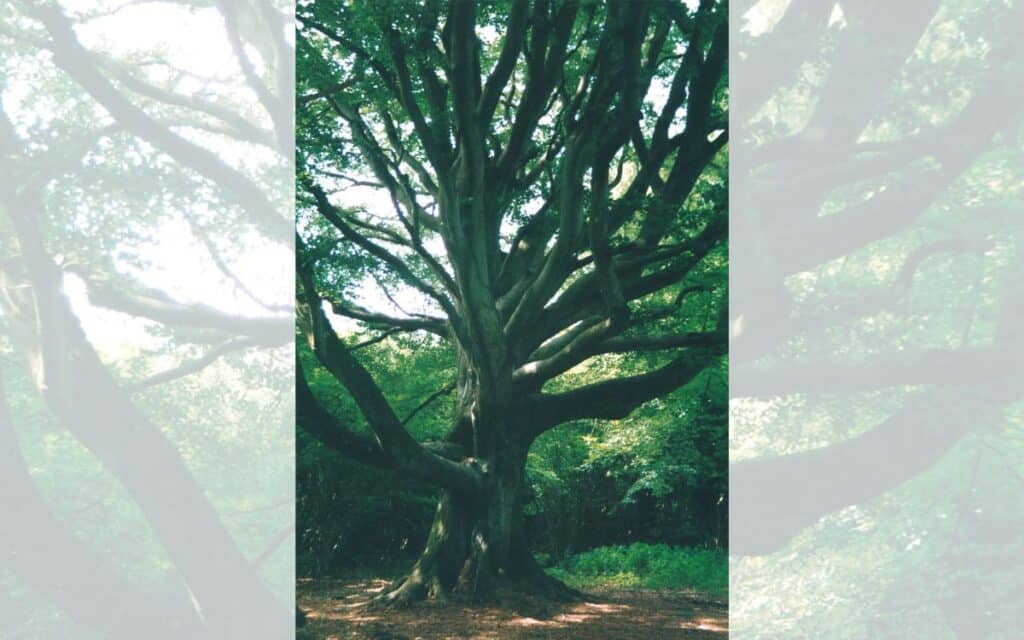
In the course of a visit that we made to the wood at the end of May 2004, Walker showed me this spot, and he found a sheet of folded paper with a piece of ribbon around it. It was at the base of the big tree. A poem, written on the sheet, referred to “the goat foot God”. On the other side of the base of the tree, there was a small area of dark staining, which Walker had reportedly discovered only shortly before our joint visit.
He stated that he’d taken a sample for testing, and he subsequently informed me that it had turned out to be human blood. During a telephone conversation in September 2004, he told me that he thought that the poem may have been part of an incantation concerned with Hecate. However, could it have been placed at the base of the tree as a hoax? The same question arises with regard to the blood.
During my visit to the area with Charles Walker at the end of May 2004, we encountered an associate of his, who took us to a spot in the wood, not far from the large beech tree, where a pentagram (a magical symbol) had been carefully cut into the top of a tree stump. It looked as if it had been produced with a saw. Another, but older, pentagram – also cut into a tree stump – was apparently found in the wood in August 2004.
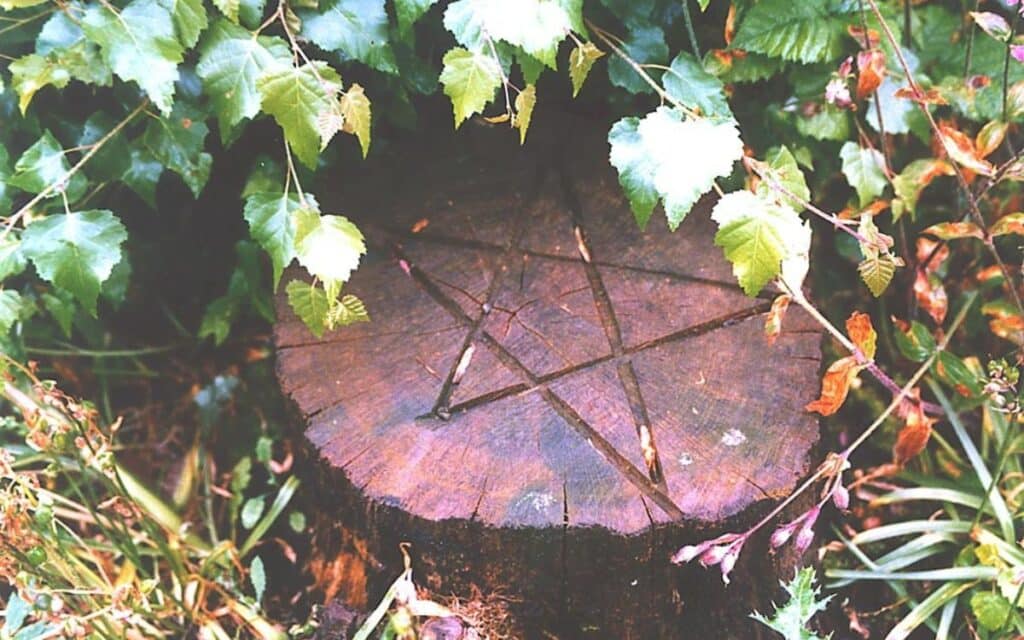
Charles Walker informed me that a cat’s head was found at the base of the large beech tree in June 2004; and he subsequently related that canine bones were found in the vicinity of the tree in early October of that year. He noted: “It was a complete skeleton and was laid out neatly, as if it had been used for something – a ritual perhaps?”
Comments
During visits to Clapham Wood in 2004, I experienced nothing abnormal. But one can’t take much from that, because, if they truly occurred, the paranormal manifestations may have been intermittent rather than regular. Indeed, it’s possible that the activity had more or less fizzled out by 2004.
If visitors to Clapham Wood know something of the area’s reputation, processes of suggestion, imagination and misattribution could lead to further reports of seemingly strange events. For example, a person who developed a headache while walking through the woods might attribute it to something malign there, and might then mention it to others, whereas a headache experienced elsewhere might soon be forgotten. Similarly, if a car malfunctioned in the vicinity of Clapham Wood, the driver might be more inclined to mention it to others if he or she were aware of the area’s reputation.
Dr Jacqueline Simpson is an academic folklorist who happens to live in Worthing and who is acquainted with Charles Walker. In her 1994 article (referenced above), she noted that it has generally proved impossible to pinpoint the early stages in the propagation of rumours. But regarding the goings-on that had allegedly occurred in Clapham Wood and at Chanctonbury Ring, she contended that “the rumours [were] originated, and are still being sedulously fostered, by a very small group of associates (originally teenagers, now middle-aged) with a passionate interest in paranormal events and occult forces, upon which they regard themselves as experts” (p. 92).
She considered the possibility that Toyne Newton and Charles Walker were the victims of hoaxes aimed at frightening them and/or making fools of them. She also pointed out that singly, or together, they could have faked events. But she noted that, having discussed the matter thoroughly with Walker, she was more inclined to think of him as the victim of a hoax than as a perpetrator.
The Demonic Connection doesn’t specify how many dogs went missing in Clapham Wood. In the normal course of events, dogs might occasionally go missing in wooded areas. Let off their leads, they might, for instance, get lost or have accidents. If the area concerned already has a reputation for odd events, such disappearances might be more likely to attract publicity. The area might then acquire an undeserved reputation for being a black spot for the disappearance of dogs.
Even if a disproportionately large number of dogs did go missing in Clapham Wood in past years, a sinister occult group may not have been to blame. One of Jacqueline Simpson’s sources was Chris Hare, a local historian and journalist. Unlike The Demonic Connection, which seems to attribute the disappearance of the dogs to the Friends of Hecate, he suggested that the culprit was a gamekeeper with a hostile attitude towards canine visitors. The following paragraphs are from an e-mail that Hare sent me in March 2006 (I’ve edited the material slightly for presentational purposes, but I haven’t changed the substantive content):
“I can confirm that my informants (now all sadly deceased) identified a gamekeeper as the man responsible for killing dogs in Clapham Wood. This man had spent the war as a Japanese POW and was scarred by the experience. From the 1960s onwards, increasingly large numbers of people took to driving from Worthing to Clapham Wood to exercise their dogs. Many of these dogs, let off their leads, ran amok amongst the pheasants, causing death and distress to the birds, especially the chicks. Pheasant shooting was, and remains, a rich man’s sport, so the loss of birds due to the presence of dogs was not just a nuisance, but an economic loss.
“After the great storm of 1987, the woods were devastated, and pheasant shooting ceased (I don’t know if it has recommenced in recent years). The landowner decided to fell most of the trees in the wood – his ambition was to transform the land into a golf course. In 1989, preservation orders were applied to the remaining trees, although by that stage many had been lost. The consequence was that the landowner, Fitzroy Somerset, had to abandon his golf course plans.
“Without the former tree cover, the diminished woods were not as attractive as they had once been for pheasant farming and shooting. It is surely no coincidence that there have been no reports of missing dogs in Clapham Wood (that I’m aware of) since 1987. [NB: In 2004, Charles Walker informed me that two dogs had gone missing in July of that year and one in the August. However, I don’t know whether they subsequently turned up. – P.A.McC.]
“My main informants were Bunny Booker (d. 1988) and Nobby Kinnard (d. 2004), both of whom spent their lives living and working in Clapham Woods. Other people born in the village and associated all their lives with the woods backed up this testimony.”
The Demonic Connection (pp. 17-18) refers to a golden retriever that became partially paralysed after running in the woods and was later put down. But the book gives no explanation for the paralysis. However, Simpson’s 1994 article (p. 100) refers to the 9 May 1975 edition of the Worthing Herald, which stated that the dog was taken to a vet, who said that it had suffered a heavy blow on the spine.
Simpson notes that the spinal damage inflicted on the dog “strongly suggests that the [aforementioned] gamekeeper had clubbed […] dogs to death, possibly after luring them with aniseed, and [had then] removed or buried the bodies” (op. cit., p.106).
In a newspaper article (‘The Clapham Woods mystery’, [Worthing] Weekend Review, 9 May 1987, pp. 18-19), Chris Hare contended that, “the only mystery about Clapham Woods […] is why so many people have proved so gullible as to take seriously the arrant nonsense expounded in recent years”. In the above-mentioned e-mail to me, he noted that many strange people were attracted to the woods after The Demonic Connection appeared.
He was informed that the local policeman, P.C. Christmas, was alerted to a rumpus at Clapham Church one night in the late 1980s. The officer found that a large group of naked revellers were attempting to link hands and dance around the church. He told them to go away, and attracted some verbal abuse, but his request was eventually complied with.
If occult rituals have been practised in and around Clapham Wood, they may have been conducted by solitary individuals or very small groups rather than by the supposed Friends of Hecate. Regarding Charles Walker’s meeting with an alleged member of the group in 1978, it’s possible that the ‘initiate’ was a hoaxer. Similarly, it’s possible that it was a hoaxer who wrote the letter to Toyne Newton, purporting to be a friend of someone in the Friends of Hecate. Indeed, it’s conceivable that the person who summoned Walker to a meeting in Clapham Wood also wrote the subsequent letter to Newton.
Drawing on information given to her by Chris Hare, Simpson’s 1994 article suggested an explanation for the mural that Walker photographed in the barn near Clapham church in 1979: “[T]he barn […] had been disused for some time, [and] had been taken over for a while by squatters, who had defaced it with graffiti” (p. 105). Simpson drew my attention to similarities between the painting photographed by Walker and an illustration on the cover of a 1965 paperback entitled The Dark World of Witches, by Eric Maple.
For example, the figure depicted on the cover of Maple’s book has clawed hands, and the left hand of the figure in the mural was also clawed (the right hand wasn’t shown). And as with the figure on the book cover, the one in the mural had an up-curled tail. Possibly, then, the illustration on the cover of Maple’s book inspired the production of the mural.
The Demonic Connection provides no hard evidence linking the aforementioned human deaths with an occult group. It’s worth noting that the deaths spanned a period of more than nine years (1972-1981). During that period, the total number of deaths, from all causes, in that part of West Sussex would obviously have been much higher. Therefore, it may be wholly unremarkable, statistically speaking, that there were a few cases where people went missing and were subsequently found dead, and where the cause of death couldn’t be determined.
Furthermore, if a tightly organized occult group, including people in high places, had been murdering members of the public, it seems unlikely that they would have left their victims’ bodies strewn around the local countryside, thereby providing the authorities with potentially incriminating forensic evidence. It also seems unlikely that such a group would continue to use Clapham Wood after its alleged activities there had been widely publicized. On the other hand, if Charles Walker was indeed threatened about pursuing his enquiries, one has to wonder why.
Acknowledgements
I investigated this case quite a few years ago. I should like to thank the following (two of whom I met personally), who provided helpful information: Chris Hare, Toyne Newton, Jacqueline Simpson and Charles Walker.
Tell us your thoughts about Clapham Wood in the comments section below!


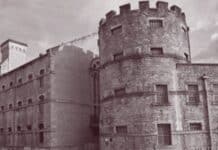
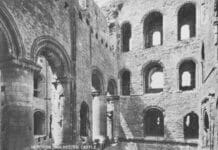
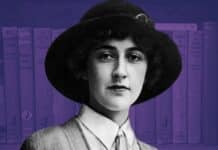
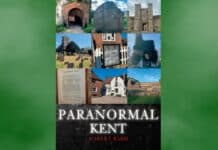


Unfortunately a figment of the late Charles Walkers imagination. Walkers lifetime of investigation at Clapham amounted to virtually nothing more than a few walks into Clapham woods and a constant retelling of the mysterious meeting on the common in the dark.
Walker is sometimes referred to as an “ex-council worker”, there is the WSCC depot at Clapham common, so he’d ride his bike up Titnore lane and cross the A27 onto the footpath that led to the cross roads (paths) where the mysterious meeting took place, turning left here takes you to the WSCC depot. It’s just uncanny that with the vague instruction from the supposed member of the Friends of Hecate “meet me at the cross roads in the woods…” walker knew exactly where to go and in all the years he never elaborated on this point. I put it to you that Walker rode this route on his daily ride to work and dreamt up the story on his commute.
How ever there is one other theory. Walker told his work colleagues of his plan to put an advert in the paper regarding the missing dogs and a colleague then phoned walker and hoaxed him? Some points to consider below:
1. The caller would have had to be within half an hour of the meeting site himself and taking into account getting to the meeting site and hiding in the bushes was probably local and lived on the common himself.
2. The Mural on the wall of the stone barn near the church never had a scale or anything to compare it to for size so it might well have been a picture photographed from a book or other small picture.
3. There is no record of Leon Forster or local memory of a body being found in Clapham Woods, likewise for the body of the young woman.
4. People “high up in society” wouldn’t risk creeping around a public woodland at night in a small no through village to kill stolen dogs.
5. The investigations by Walker were well below amateur standard and never turned up any evidence at all.
I could go on but there is no need to at this time.
Alex.